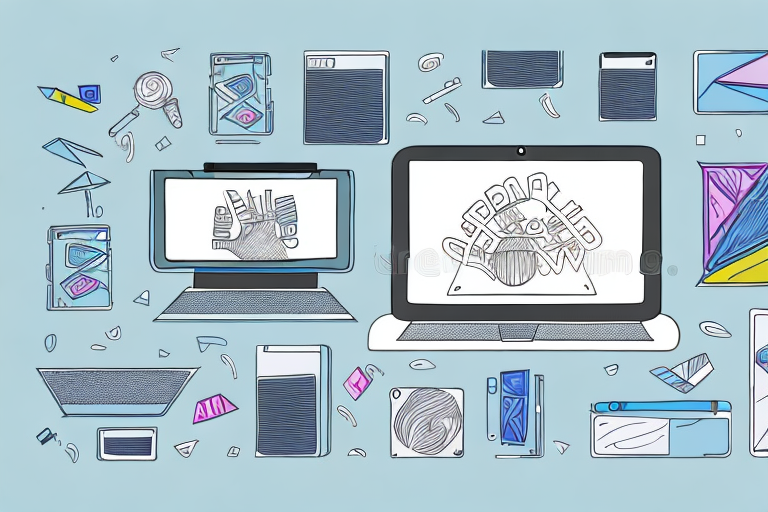Technology has completely transformed every aspect of our lives and learning is certainly no different. Over the years we have seen a significant increase, in the integration of innovation, in classrooms, online platforms and even traditional learning settings. The purpose of this article is to delve into the ways innovation has revolutionized learning shedding light on both the advantages and obstacles it brings about.
The Benefits of Technology in the Classroom
The use of innovation has had an impact, on the way learning is conducted in schools. One of the benefits of incorporating innovation in the classroom is the availability of information. Gone are the days when students relied on textbooks or limited resources for their studies. Nowadays with a few clicks students can effortlessly access a vast wealth of knowledge from numerous online sources, academic databases and instructive websites. This convenient access, to information not widens their perspectives but also enables them to delve deeper into their chosen subjects fostering a more comprehensive understanding.
- In addition to increased engagement, innovation in the classroom also fosters collaboration among students. With the availability of online platforms and communication tools, students can easily connect and collaborate with their peers, regardless of their physical location. This opens up a whole new world of possibilities for group projects, discussions, and knowledge sharing. Students can work together on assignments, exchange ideas, and provide constructive feedback to one another, all in a virtual space. This collaborative learning not only enhances their social and communication skills but also prepares them for the collaborative nature of the modern workforce.
- Furthermore, innovation in the classroom promotes creativity and innovation. With access to a wide range of digital tools and software, students can unleash their imagination and create unique projects that showcase their learning. Whether it’s designing a website, creating a digital artwork, or producing a multimedia presentation, technology provides students with endless opportunities to express themselves creatively. This not only boosts their confidence but also encourages them to think outside the box and come up with innovative solutions to real-world problems.
Lastly, innovation in the classroom prepares students for the digital age. In today’s technology-driven world, digital literacy is a must-have skill. By integrating innovation into their learning, students become familiar with various digital tools, software, and online platforms. They learn how to navigate the internet safely, evaluate online information, and use innovation responsibly. These digital skills are not only essential for their academic success but also for their future careers, where technology is a ubiquitous presence.
Rise of Online Education
With the advent of learning the possibilities for learning have expanded beyond boundaries. Now students have the opportunity to enroll in courses offered by institutions from around the world opening up perspectives and expanding their intellectual horizons.
Take, for instance, a student residing in a town in America. Thanks to platforms they can easily access courses taught by regarded professors. This enables them to acquire knowledge and insights that were previously limited to those studying in cities or affluent areas. The democratization of learning through platforms has truly evened the playing field ensuring opportunities for all students.
Additionally, online learning also allows for flexible scheduling, enabling individuals to pursue their studies while juggling other commitments. This flexibility is especially beneficial for working professionals who want to enhance their skills or earn additional qualifications without having to sacrifice their careers or family responsibilities.
Imagine a single parent who wants to pursue a degree but cannot attend regular classes due to their full-time job and childcare responsibilities. With online learning, they can now study at their own pace, accessing course materials and lectures whenever it is convenient for them. This flexibility empowers individuals to take control of their learning and create a learning schedule that fits their unique circumstances.
Furthermore, online learning has not only expanded access to learning but has also democratized it. It has made quality learning accessible to those who may have been excluded in the past due to financial or logistical constraints.
- Consider a talented student from a low-income family who dreams of attending a prestigious university but cannot afford the exorbitant tuition fees. Online learning provides them with an affordable alternative, allowing them to enroll in high-quality courses and acquire valuable knowledge and skills without the burden of crippling student debt.
- In addition, online learning eliminates geographical barriers, making it possible for individuals in remote or underprivileged areas to access instructive resources that were previously out of reach. This inclusive approach has empowered individuals from disadvantaged backgrounds, helping bridge the instructive divide and promoting social mobility.
- Moreover, online learning fosters a global community of learners. Students from different countries and cultures can come together in virtual classrooms, sharing their experiences and perspectives. This enriches the learning environment, as it exposes
students to diverse ideas and viewpoints.
Through online discussion forums and collaborative projects, students can engage in meaningful interactions with their peers from around the world, gaining a deeper understanding of different cultures and developing essential skills for the globalized workforce.
Re-imagining Traditional Learning
Technology has revolutionized the world of learning, pushing the boundaries of traditional learning and prompting educators to rethink pedagogical approaches. In this digital age, integrating multimedia elements into the classroom has become a powerful tool for enhancing student engagement and knowledge retention.
Imagine a classroom where students can step into ancient civilizations through virtual reality, exploring the streets of ancient Rome or witnessing the construction of the Great Wall of China. By incorporating videos, simulations, and virtual reality, teachers can create immersive and interactive learning experiences that captivate students’ attention and make learning come to life.
As innovation continues to evolve, so does the potential for innovative and transformative learning experiences. From augmented reality to artificial intelligence, the possibilities are endless. By embracing these advancements and reimagining traditional learning, educators can empower students to become active participants in their learning, fostering a love for lifelong learning.

How Technology Has Changed the Way We Learn
The advent of technology has ushered in a new era of learning. Gone are the days of rote memorization and passive absorption of information. Technology has fostered a shift towards experiential learning, enabling students to actively engage with the material and apply their knowledge in real-world scenarios.
One of the ways innovation has revolutionized learning is through the use of virtual reality (VR) and augmented reality (AR). These immersive technologies allow students to step into virtual environments and experience hands-on learning like never before. For example, medical students can practice complex surgical procedures in a virtual operating room, giving them valuable experience and confidence before entering a real-life operating theater.
Moreover, innovation has also provided opportunities for continuous and lifelong learning. With an abundance of online resources, individuals can learn at their own pace, exploring areas of personal interest beyond the confines of a formal curriculum. This autonomy empowers learners and encourages a self-directed approach to learning.
Another significant impact of technology on learning is the accessibility it provides to learning. In the past, geographical barriers could limit access to quality learning. However, with the rise of online learning platforms, individuals from all corners of the world can now access courses from prestigious universities and learn from renowned experts. This democratization of learning has opened up new opportunities for those who may have otherwise been excluded from traditional instructive systems.
Impact of Technology on Student Engagement
One notable impact of innovation in learning is its ability to enhance student engagement. Gamification, a technique that incorporates game elements into the learning process, has gained traction in recent years. By introducing challenges, rewards, and friendly competition, gamification makes learning more enjoyable and motivates students to actively participate in their instructive journey.
Exploring the Benefits of Virtual Learning
Virtual learning, also known as distance learning, has emerged as a popular mode of learning, especially during unprecedented times like the COVID-19 pandemic. By leveraging the power of technology, virtual learning transcends physical barriers, making education accessible to all, regardless of location or circumstances.
Additionally, virtual learning offers a variety of multimedia tools that enhance the learning experience. Live video lectures, online discussions, and interactive assignments create an immersive and collaborative environment, fostering student engagement and deepening understanding.
The Future of Education Technology
As innovation continues to evolve at a rapid pace, so does its potential in learning. From artificial intelligence and virtual reality to personalized learning algorithms, the future of learning innovation holds vast possibilities.
However, it is crucial to navigate the integration of innovation thoughtfully. While it offers numerous benefits, innovation should never replace the role of a competent teacher or disregard the importance of human interaction in the learning process. Striking a balance between innovation and pedagogy is vital to ensure effective and meaningful learning experiences.
To wrap up
In conclusion, the transformative power of innovation in learning cannot be ignored. From the benefits it brings to the classroom to the rise of online learning and the reimagining of traditional learning, tools has revolutionized the way we learn and engage with learning content. As we navigate the path forward, it is essential to harness innovation’s potential while preserving the core values of education.
